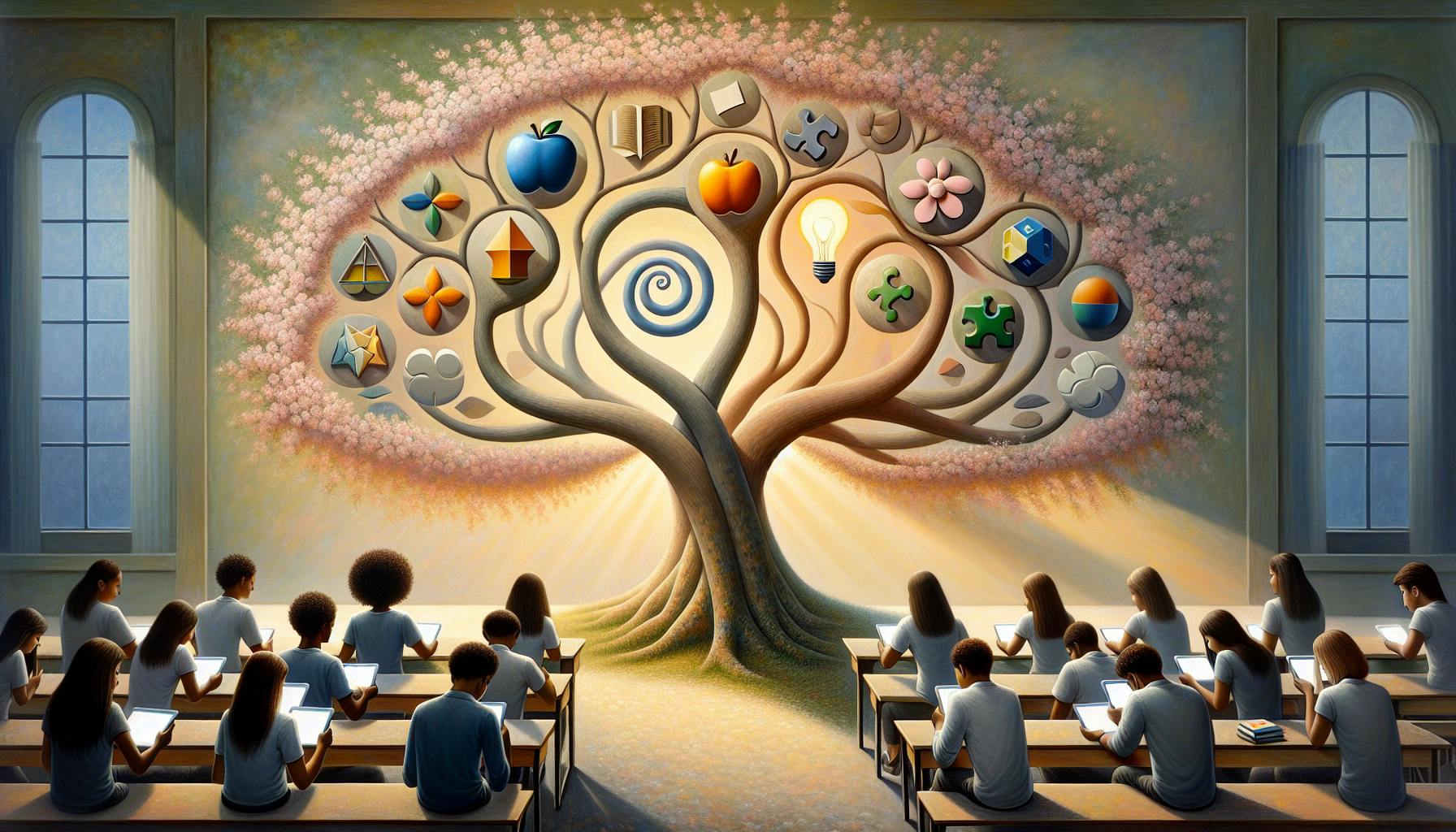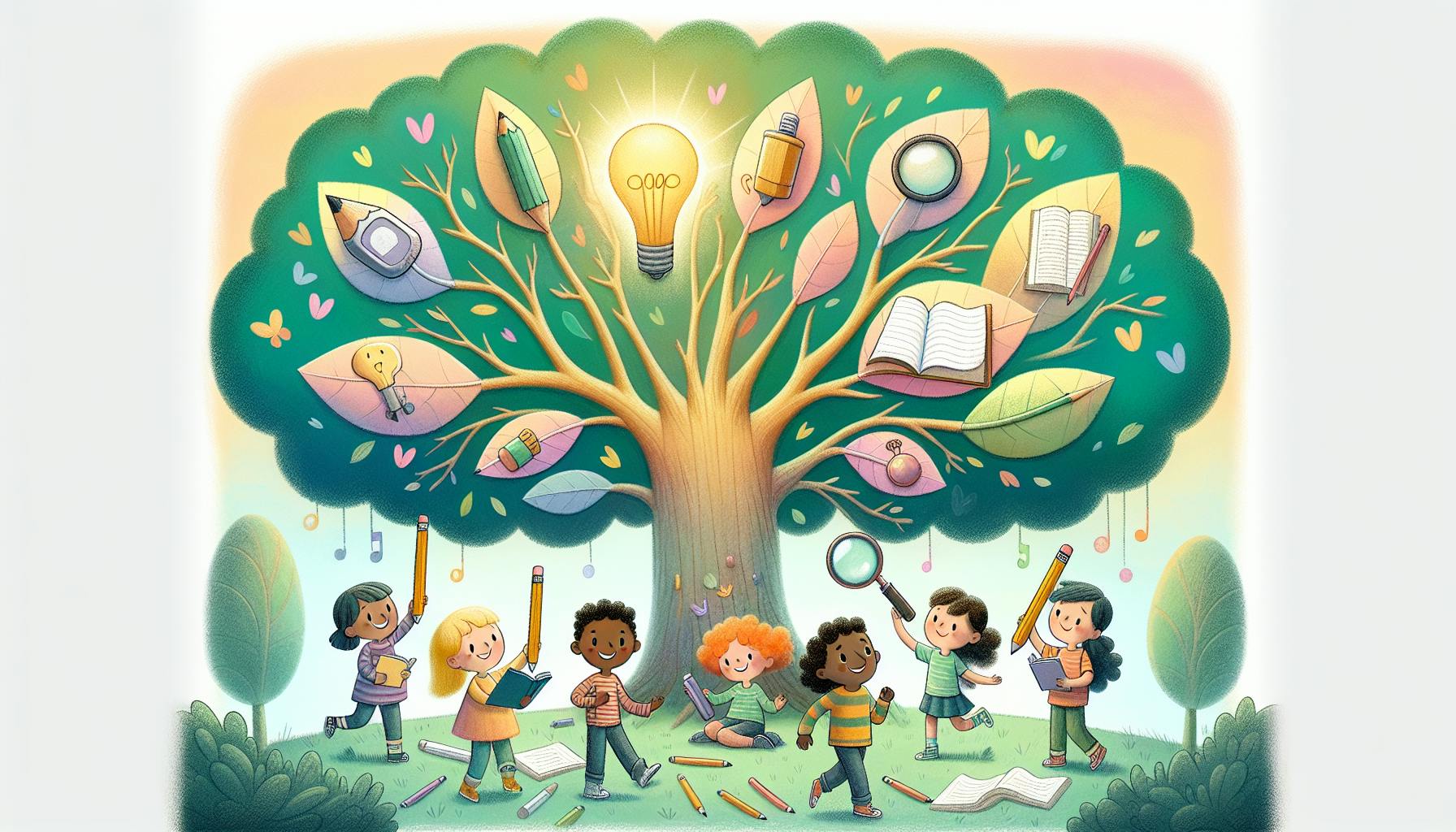The landscape of education has undergone a seismic shift over the past few decades. Traditional teaching methods are being re-evaluated as educators seek more effective ways to engage students and enhance learning outcomes. At the forefront of this transformation is the modern teaching aid, a term that encompasses a wide range of technological tools and resources designed to support and enrich the educational experience. As we delve deeper into the digital age, the integration of modern teaching aids is not just beneficial—it's essential for preparing students to thrive in an increasingly complex world.
The Evolution of Teaching Aids: From Chalkboards to Virtual Reality
A Brief History of Teaching Aids
Teaching aids have always played a crucial role in education. From the humble chalkboard to the overhead projector, these tools have served as extensions of the teacher's ability to convey information. However, the limitations of these traditional aids became apparent as educational demands evolved. The need for more interactive and engaging tools led to the development of multimedia resources, educational television, and eventually, computer-based learning.
The Digital Revolution in Education
The advent of the internet and personal computing in the late 20th century marked a turning point. Classrooms began to incorporate computers, and educators started exploring the potential of digital resources. This period saw the emergence of the first modern teaching aids, which harnessed the power of technology to create more dynamic and interactive learning environments.
What Is a Modern Teaching Aid?
A modern teaching aid refers to any educational tool or resource that leverages current technology to enhance the teaching and learning process. These aids are designed to make education more accessible, engaging, and effective by incorporating interactive elements, multimedia content, and personalized learning pathways. They range from digital devices like tablets and interactive whiteboards to software applications, online platforms, and even virtual and augmented reality experiences.
Types of Modern Teaching Aids
Digital Modern Teaching Aids
Tablets and Laptops
Portable devices such as tablets and laptops have become staples in modern classrooms. They provide students with access to a vast array of educational apps and digital textbooks, enabling interactive learning both inside and outside the classroom.
Educational Software and Apps
Software applications offer tailored learning experiences across various subjects. They often include features like progress tracking, adaptive difficulty levels, and gamified elements to keep students engaged.
Online Resources and E-books
The internet is a treasure trove of information. Educational websites, online journals, and e-books serve as invaluable resources for both teachers and students, facilitating research and self-directed learning.
Interactive Modern Teaching Aids
Interactive Whiteboards
Interactive whiteboards replace traditional chalkboards with touch-sensitive screens that allow teachers to display multimedia content, annotate in real-time, and save lessons for future reference.
Classroom Response Systems
Also known as "clickers," these systems enable students to respond to questions during lectures, allowing for immediate feedback and increased participation.
Smart Classrooms
Smart classrooms integrate various technologies to create a seamless learning environment. Features may include automated lighting and temperature controls, voice-activated assistants, and interconnected devices that enhance collaboration.
Virtual and Augmented Reality
Virtual Reality (VR)
VR technology immerses students in simulated environments, offering experiential learning opportunities that were previously impossible. For example, students can explore historical sites, conduct virtual science experiments, or travel inside the human body.
Augmented Reality (AR)
AR overlays digital information onto the real world, enhancing the learning experience. Apps like AR flashcards and interactive textbooks bring static content to life, making abstract concepts more tangible.
Online Learning Platforms
Massive Open Online Courses (MOOCs)
Platforms like Coursera, edX, and Khan Academy offer courses from prestigious institutions, making high-quality education accessible to a global audience.
Learning Management Systems (LMS)
Systems like Moodle and Blackboard allow educators to manage course content, track student progress, and facilitate communication outside the traditional classroom setting.
Benefits of Using Modern Teaching Aids
Enhancing Student Engagement
Interactive Learning Experiences
Modern teaching aids transform passive learning into active engagement. Interactive simulations, games, and multimedia presentations capture students' attention and make learning enjoyable.
Real-World Applications
By simulating real-world scenarios, these tools help students understand the practical applications of theoretical knowledge, increasing relevance and interest.
Catering to Different Learning Styles
Personalized Learning Paths
Adaptive learning technologies adjust content and pacing based on individual student performance, ensuring that each learner receives instruction tailored to their needs.
Multisensory Learning
Modern teaching aids often combine visual, auditory, and kinesthetic elements, catering to various learning preferences and enhancing overall comprehension.
Improving Educational Outcomes
Enhanced Retention and Understanding
Interactive and immersive learning experiences have been shown to improve memory retention and deepen understanding of complex concepts.
Immediate Feedback
Digital tools often provide instant feedback, allowing students to identify and correct mistakes promptly, which accelerates the learning process.
Promoting Collaboration and Communication
Collaborative Platforms
Tools like Google Classroom and Microsoft Teams facilitate group projects and discussions, fostering teamwork and communication skills.
Global Connectivity
Online platforms enable students to connect with peers and experts worldwide, broadening their perspectives and cultural understanding.
Implementing Modern Teaching Aids in the Classroom
Strategies for Teachers
Professional Development
Ongoing training is essential for teachers to stay abreast of the latest technologies and learn how to integrate them effectively into their teaching practices.
Curriculum Integration
Modern teaching aids should align with curriculum goals. Teachers must ensure that these tools enhance learning objectives rather than serve as distractions.
Student-Centered Learning
Empowering students to take an active role in their education encourages ownership and motivation. Allowing them to explore and create using modern teaching aids can lead to deeper engagement.
Overcoming Challenges
Resource Limitations
Budget constraints can hinder the adoption of modern teaching aids. Schools can seek grants, partnerships, and community support to acquire necessary technologies.
Technological Literacy
Both teachers and students may face a learning curve with new technologies. Providing adequate training and support is crucial for successful implementation.
Ensuring Equity
Access to modern teaching aids must be equitable to prevent widening the digital divide. Initiatives to provide devices and internet access to underserved communities are essential.
Case Studies: Success Stories of Modern Teaching Aid Integration
The Flipped Classroom Model
In flipped classrooms, traditional lecture and homework elements are reversed. Students watch video lectures at home and engage in interactive activities in class. This model leverages modern teaching aids to maximize classroom time for collaboration and hands-on learning.
Impact on Student Performance
Studies have shown that the flipped classroom model can lead to higher student achievement, improved engagement, and better understanding of course material.
Virtual Reality in Medical Education
Medical schools have adopted VR simulations to train students in surgical procedures without the risks associated with practicing on real patients.
Benefits Realized
These simulations provide a safe environment for students to hone their skills, leading to increased proficiency and confidence in real-world applications.
Educational Apps in Early Childhood Education
Apps like ABCmouse and Khan Academy Kids offer interactive learning experiences for young children, focusing on foundational skills in literacy and numeracy.
Outcomes Observed
Early adoption of these modern teaching aids has been linked to improved school readiness and accelerated learning in core subject areas.
The Future of Modern Teaching Aids
Artificial Intelligence (AI) and Machine Learning
Personalized Learning Experiences
AI can analyze student data to provide highly personalized learning pathways, adjusting content difficulty and style to optimize learning outcomes.
Virtual Assistants
AI-powered assistants can support both teachers and students by answering questions, providing resources, and managing administrative tasks.
Gamification of Education
Engaging Students Through Play
Incorporating game elements into learning can increase motivation and engagement. Point systems, leaderboards, and rewards make learning competitive and fun.
Educational Video Games
Games designed with educational objectives can teach complex subjects like history, science, and mathematics in an interactive way.
Blockchain Technology
Secure Credentialing
Blockchain can provide secure and verifiable records of academic achievements, simplifying the process of credential verification.
Decentralized Learning Platforms
Blockchain could enable decentralized education systems where students have control over their learning data and can access resources from multiple providers seamlessly.
The Role of 5G and Advanced Connectivity
Enhanced Access to Resources
Faster internet speeds and reduced latency will improve access to high-quality multimedia content and real-time collaboration tools.
Internet of Things (IoT) in Education
IoT devices can collect data on student engagement and environmental factors, allowing for more responsive and adaptive learning environments.
Addressing the Challenges Ahead
Ethical Considerations
Data Privacy
As modern teaching aids collect more data, ensuring student privacy becomes paramount. Robust policies and security measures are necessary to protect sensitive information.
Equity and Inclusion
Efforts must be made to ensure that advancements in technology do not exacerbate existing inequalities. Inclusive design and accessibility features are critical.
Preparing Educators for the Future
Continuous Professional Development
The rapid pace of technological change requires ongoing learning for educators. Institutions must prioritize professional development to keep teachers equipped with the necessary skills.
Collaborative Learning Communities
Encouraging collaboration among educators can foster the sharing of best practices and innovative solutions to common challenges.
Conclusion
The integration of the modern teaching aid into educational systems worldwide represents a significant advancement in how we approach teaching and learning. These tools offer the potential to make education more engaging, personalized, and effective. However, realizing this potential requires careful planning, investment, and a commitment to addressing the challenges that accompany technological integration.
By embracing modern teaching aids thoughtfully and inclusively, educators can prepare students not only to excel academically but also to navigate and contribute positively to a rapidly changing world. The future of education lies in our ability to harness these technologies to create enriching, equitable, and empowering learning experiences for all students.
Educators, policymakers, and stakeholders must collaborate to ensure that the benefits of modern teaching aids are realized universally. Investment in technology, infrastructure, and professional development is essential. By working together, we can create an educational environment that leverages the power of technology to unlock the full potential of every learner.


